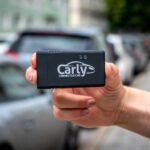Understanding your vehicle’s diagnostic codes is crucial for proactive car maintenance, and OBD2 scanners are your gateway to this information. Among the various codes, pending codes are particularly important as they act as an early warning system. Let’s delve into what Obd2 Scanner Pending Codes are, what they signify, and why they matter.
Understanding Standard OBD2 Codes (Generic Codes)
OBD2, or On-Board Diagnostics II, is a standardized system in vehicles that monitors various systems and components. When something goes wrong, it triggers a “check engine light” and stores diagnostic trouble codes (DTCs). These codes fall into two main categories: standard or generic codes, and enhanced or manufacturer-specific codes.
Standard codes, also known as “P codes,” are universal across all OBD2-compliant vehicles, regardless of make or model. These codes primarily relate to the engine and emissions systems. They cover common issues like engine misfires, evaporative emission (EVAP) leaks, and faulty oxygen (O2) sensors.
There are three types of generic OBD2 codes that an OBD2 scanner can reveal:
Pending Codes: The Pre-Problem Indicators
OBD2 scanner pending codes are like your car whispering a warning before shouting. They indicate that a particular system isn’t performing within its ideal parameters, but the deviation isn’t yet severe enough to trigger a confirmed problem or turn on the check engine light.
Think of it like a temperature gauge. A sensor might normally operate between 90-110 degrees Fahrenheit. An acceptable range might be broader, say 80-120 degrees. If the sensor reads 85 degrees, it’s outside the “normal” zone but not critically problematic. In this scenario, an OBD2 scanner would likely register a pending code.
Why are pending codes important? They provide an early opportunity to address minor issues before they escalate into major repairs. By catching problems at this stage, you can often prevent more significant damage and costly fixes down the line. Ignoring pending codes can lead to them becoming confirmed codes, which signal a more serious issue.
Confirmed Codes: Action Required Now
Confirmed codes, in contrast to pending codes, indicate an active problem that needs your attention. Using our temperature sensor example, if the reading drops below 80 or rises above 120 degrees, the system would then register a confirmed code. This signifies that the system is operating outside of acceptable limits and requires investigation and repair. Confirmed codes are typically what illuminate the check engine light.
Permanent Codes: The Unforgettable Faults
Permanent codes are a newer type of OBD2 code. Once set, they cannot be cleared using a standard OBD2 scanner. These codes are specifically designed to ensure that emissions-related issues are properly addressed. A permanent code will only clear itself after the underlying problem has been resolved and the vehicle has completed several drive cycles under various conditions (idling, city driving, highway speeds) to verify the fix.
Enhanced OBD2 Codes (Manufacturer Specific)
Beyond the standard codes, there are enhanced or manufacturer-specific codes. These codes cover systems outside of the engine and emissions, such as:
- Anti-lock Braking System (ABS)
- Airbags (SRS)
- Transmission
- Body Control Module (BCM) – controlling lights, windows, etc.
- Heating, Ventilation, and Air Conditioning (HVAC)
- Stereo System
- Four-Wheel Drive (4WD) / All-Wheel Drive (AWD) systems
Enhanced codes are unique to each vehicle manufacturer and usually require more advanced scan tools to access, beyond basic OBD2 scanners. They are categorized into:
- P Codes – Powertrain (enhanced engine and transmission codes)
- C Codes – Chassis (ABS, suspension)
- B Codes – Body (BCM, HVAC, SRS, stereo)
- U Codes – Network/Communication (module communication issues)
Understanding OBD2 scanner pending codes is a valuable step in vehicle maintenance. By regularly scanning your vehicle and understanding the meaning behind these codes, you can proactively address potential problems, ensuring your car runs smoothly and reliably for longer.
